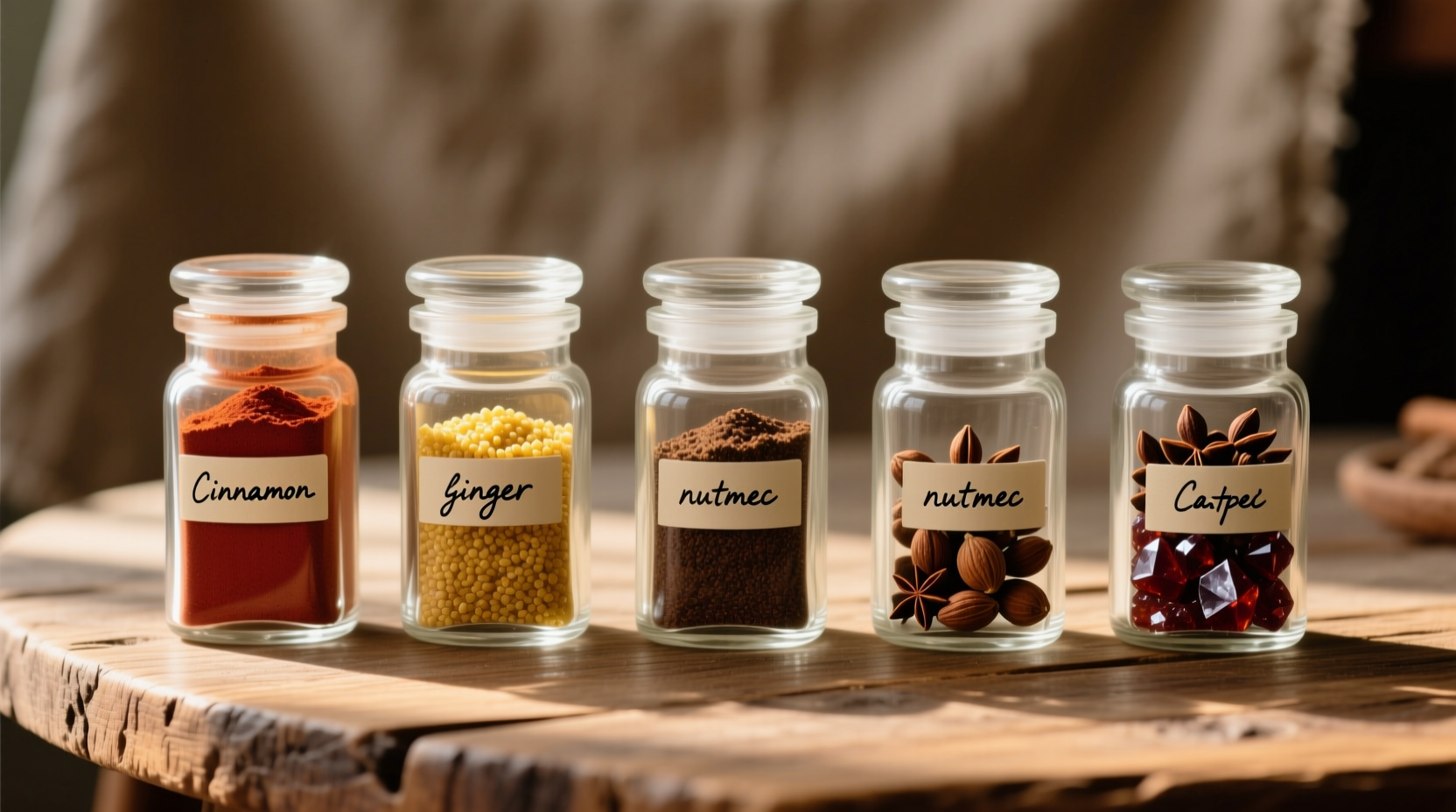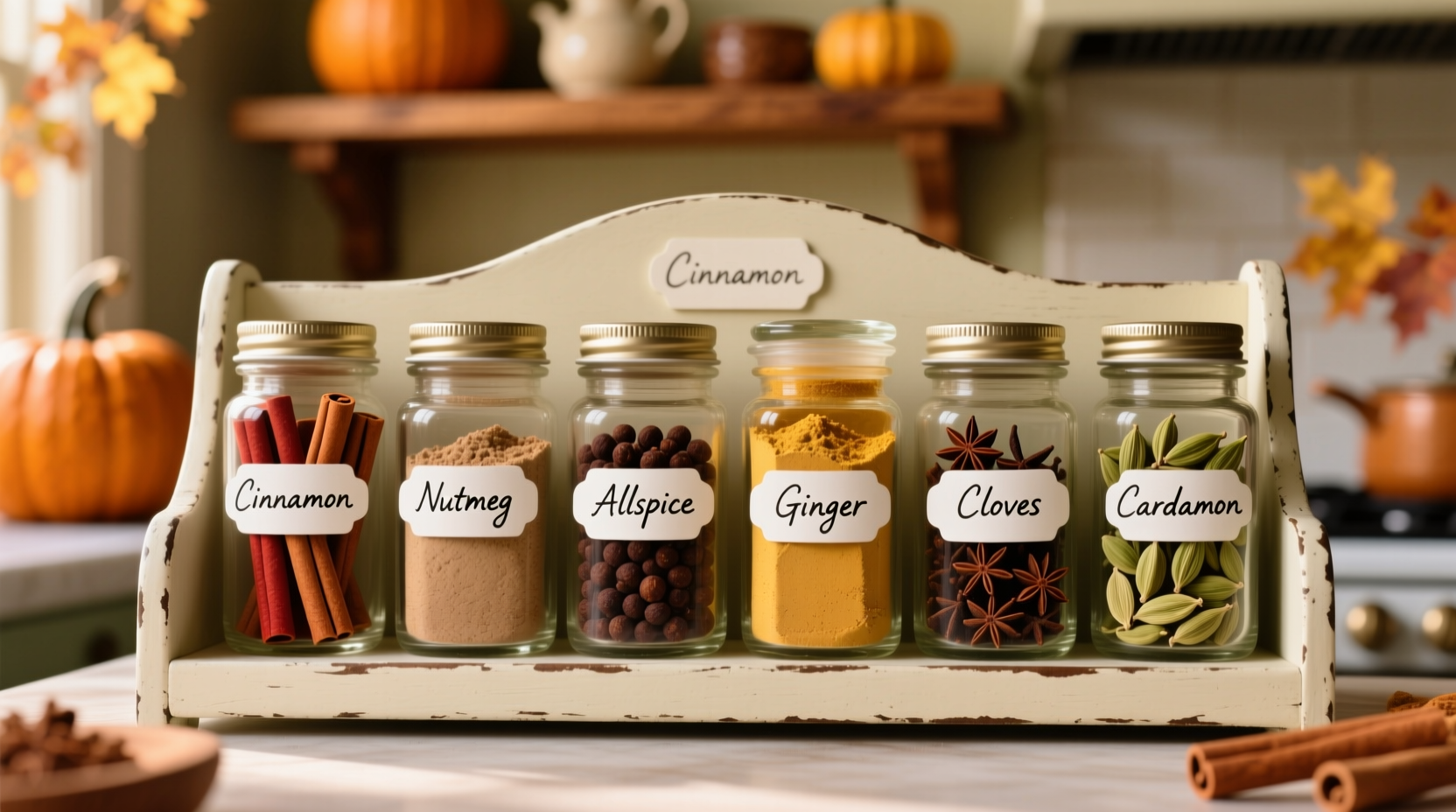As a French-trained chef specializing in European spice traditions, I've spent years studying how historical spice combinations evolved into modern favorites. Pumpkin spice may seem like a contemporary American phenomenon, but its roots trace back centuries to European spice merchants who crafted warming blends for cold seasons. Let's explore exactly what makes up this beloved seasonal blend and how to use it effectively in your kitchen.
The Essential Spices in Pumpkin Spice Blend
Despite its name, pumpkin spice contains no pumpkin whatsoever. The blend relies on five core spices that create that distinctive autumnal flavor profile everyone recognizes from lattes, pies, and baked goods. Understanding each component helps you appreciate why this combination works so well together.
| Spice | Percentage in Commercial Blend | Flavor Profile | Primary Origin |
|---|---|---|---|
| Cinnamon | 60-70% | Warm, sweet, woody | Sri Lanka (Ceylon), Indonesia (Cassia) |
| Ginger | 15-20% | Peppery, citrusy, slightly sweet | India, China, Nigeria |
| Nutmeg | 8-12% | Earthy, nutty, slightly sweet | Indonesia, Grenada |
| Cloves | 5-8% | Intensely aromatic, sweet-spicy | Madagascar, Indonesia, Tanzania |
| Allspice | 3-5% | Complex blend of cinnamon, nutmeg, cloves | Jamaica, Mexico, Central America |
This standardized ratio comes from the USDA Agricultural Research Service's spice composition database, which analyzes common commercial spice blends. While manufacturers may tweak these proportions slightly, this represents the industry standard that creates the consistent flavor profile consumers expect.
What Pumpkin Spice Is NOT
Let's clear up some common misconceptions about this seasonal favorite:
- No pumpkin involved - Despite the name, pumpkin spice contains zero pumpkin
- Not a single spice - It's always a blend of multiple spices
- Not exclusively American - The concept evolved from European spice traditions
- Not just for pumpkin recipes - Works with apples, pears, sweet potatoes, and more

Historical Evolution of Pumpkin Spice
Understanding the historical context helps explain why these particular spices were combined. The blend didn't originate with pumpkin pie but evolved from European spice traditions:
- 15th-16th century: European spice merchants created warming spice blends using newly accessible New World and Asian spices
- 17th century: English cookbooks featured "pumpion pie" recipes calling for "spice it with cinnamon, nutmeg, and ginger"
- 18th century: American colonists adapted these blends for local ingredients including pumpkins
- 1930s: McCormick & Company standardized the modern pumpkin pie spice blend
- 2010s: "Pumpkin spice" became a cultural phenomenon beyond baking
This historical progression, documented in culinary archives like the Food History Collection at the University of Massachusetts, shows how practical spice combinations evolved into today's standardized blend.
Creating Your Perfect Homemade Blend
While commercial blends work well, making your own pumpkin spice gives you control over freshness and flavor balance. Here's my recommended ratio for a balanced blend that works across various applications:
- 4 parts cinnamon (the foundation)
- 2 parts ginger (for brightness)
- 1.5 parts nutmeg (for warmth)
- 1 part cloves (for depth)
- 0.5 parts allspice (for complexity)
For best results, use whole spices and grind them fresh. The Culinary Institute of America's spice research confirms that freshly ground spices retain up to 60% more volatile aromatic compounds than pre-ground versions. Store your blend in an airtight container away from light and heat for maximum freshness (up to 6 months).
Practical Applications Beyond the Obvious
While pumpkin spice shines in baked goods, its versatility extends to many applications. Consider these less obvious uses:
- Coffee and tea enhancement - Add a pinch to your morning brew
- Oatmeal and yogurt topping - Mix with honey for instant flavor
- Roasted vegetables - Toss sweet potatoes or carrots with olive oil and pumpkin spice
- Breakfast smoothies - Blend with banana, almond milk, and oats
- Homemade body scrub - Mix with coconut oil and sugar for exfoliation
When using pumpkin spice in savory applications, remember that less is more—start with 1/4 teaspoon per serving and adjust to taste. The blend works particularly well with fall vegetables like butternut squash, acorn squash, and parsnips.
Storage and Freshness Tips
Spice quality dramatically affects your final product. Follow these guidelines to maintain optimal flavor:
- Store in airtight containers away from heat and light
- Buy small quantities you'll use within 6 months
- Perform the 'sniff test' - if aroma is weak, potency has diminished
- Consider freezing whole spices to extend shelf life
- Label containers with purchase date for rotation
According to spice quality research from the USDA National Agricultural Library, ground spices lose 30-50% of their volatile compounds within six months under typical kitchen storage conditions. Whole spices maintain potency significantly longer.
Common Substitutions and Adjustments
Don't have the complete blend? Here are practical substitutions based on what you have available:
- No cloves - Use a pinch of allspice or cardamom
- No allspice - Increase nutmeg and cloves slightly
- Milder version - Reduce cloves and ginger by half
- Stronger version - Increase ginger and cloves slightly
- For sensitive palates - Omit cloves entirely and increase cinnamon
Remember that individual spice sensitivities vary. Some people find cloves overpowering, while others crave that distinctive bite. Adjust to your personal preference—there's no single 'correct' balance.
FAQ: Pumpkin Spice Questions Answered
- Can I use pumpkin pie spice instead of pumpkin spice? (They're the same thing)
- Does pumpkin spice contain sugar? (No, pure blends are just spices)
- Why does my homemade blend taste different from store-bought? (Ratios and freshness)
- Can I make pumpkin spice without cloves? (Yes, with adjustments)
- Is pumpkin spice gluten-free? (Yes, if no additives are included)











 浙公网安备
33010002000092号
浙公网安备
33010002000092号 浙B2-20120091-4
浙B2-20120091-4